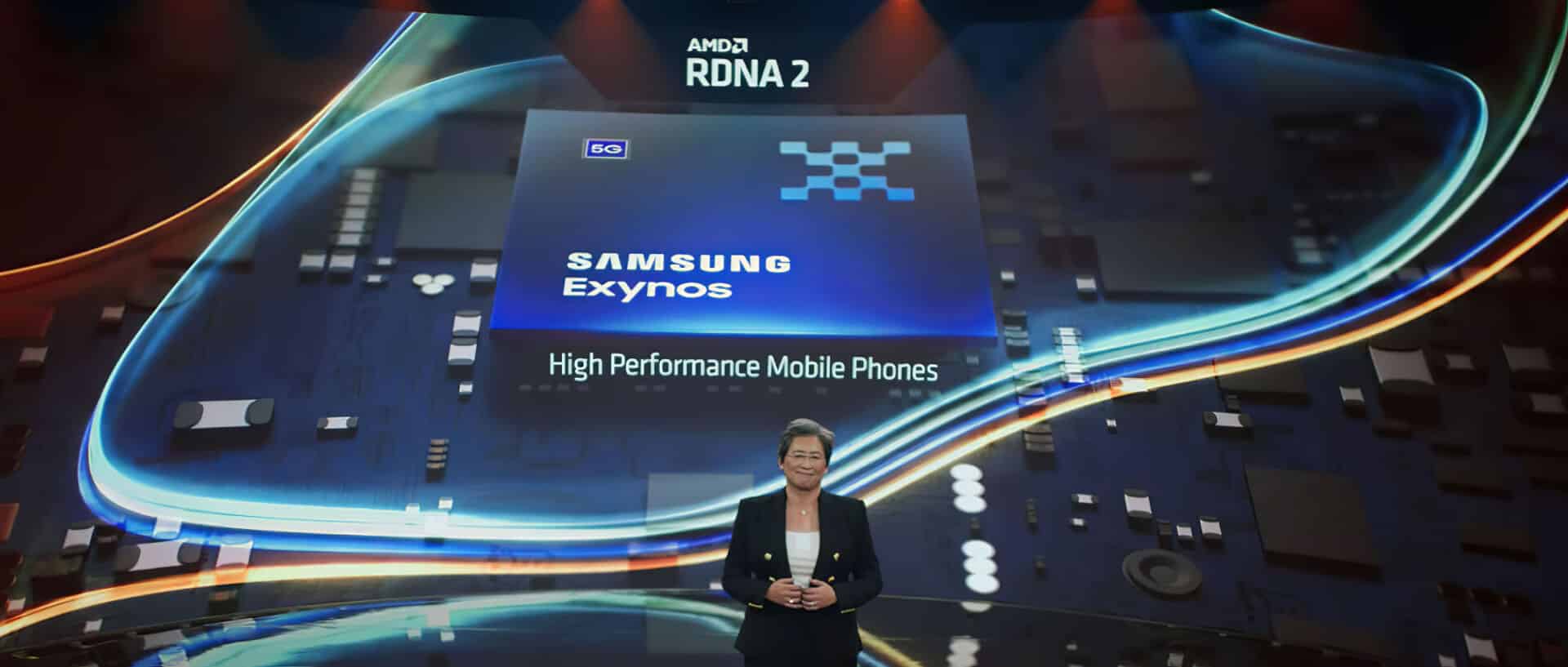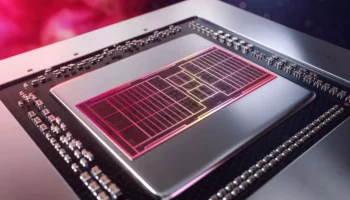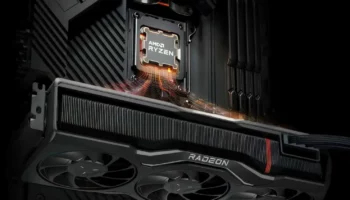Samsung is all set to launch its Exynos 2200 SoC in late December. Featuring AMD’s Radeon RDNA 2 graphics IP, the Exynos 2200 is expected to boost the gaming performance of the next Galaxy device by leaps and bounds. According to previous leaks, the GPU is nearly 50% faster than the Apple A14 in graphics workloads and considerably ahead of the Exynos 2100. We’re looking at a 2-4 CU GPU with a core clock of around 1GHz paired with multiple Cortex core clusters.
According to a new rumor (an official benchmark), the Exynos 2200 is 31-34% faster than its predecessor at peak performance while dropping to 17-20% in sustained workloads. This result is certainly a bit underwhelming compared to all the previous leaks that we’ve seen and appears to be limited to a single application or benchmark. The GPU seems to be suffering from a fair bit of throttling on prolonged use. It’s unclear whether the retail hardware will have the same issue or not.
The source claims that the (GPU) performance difference between the Snapdragon 888 and the Exynos 2200 is quite massive while not revealing the exact numbers. Last, but not least, it’s important to note that these figures are from pre-release hardware and drivers, and the final figures will likely be a bit higher.
Previous coverage:
In the latest round of tests, the Exynos SoC meant for the Galaxy S22 has gotten a GOS (Game Optimizing Service) uplift, alleviating throttling when the service is enabled. It’s worth noting that GOS limits the max boost clock to roughly 50% of the overall frequency, but it’s still more performant than the throttled clocks.
The mRDNA GPU on the Exynos 2200 is presently being tested with a boost clock of 1.29GHz. With GOS, the max clocks drop to 600-700MHz, but these figures are still higher than previous tests where the GPU would throttle to 30% of its peak clock.
AMD’s mobile RDNA 2 GPU is capable of seriously high clock speeds. At the moment, the engineers are testing two variants of the Exynos 2200 SoC: one with the GPU core clock set to 1.29GHz, and the other to 1.58GHz. The catch is that with the latter, the CPU clocks (of the middle cores) have to be tuned down a bit to keep the TDP in check:
The source claims that the peak GPU score with the 1.58GHz variant is better due to higher retention even after throttling. It looks like the RDNA 2 architecture is capable of high boost clocks regardless of the process node. According to the latest rumor, the mobile RDNA 2 design Samsung is using is capable of a whopping 1.8GHz with the TDP set to 10W.
The scores of the mobile GPU in GFXBench are as follows:
The graphics processor integrated into the mobile SoC in partnership with AMD features 6 CUs, with an operating (boost?) clock of 1.31GHz. The processor was benchmarked (2nd round) in GFXBench, and the following scores were observed:
Manhattan 3.1: 170.7 FPS
Aztec Normal: 121.4 FPS
Aztec High: 51.5 FPS
The GFXBench figures from the 3rd round of the graphic throttling tests are as follows:
Manhattan 3.1: 127.5 FPS
Aztec Normal: 90.7 FPS
Aztec High: 39.65 FPS
In addition to Samsung, Google and a few Chinese smartphone markers are also (reportedly) working on implementing RDNA 2 IP in their devices. It’s best to take the latter with a grain of salt as it’s the first we’re hearing of it. The Exynos 2200 SoC paired with the RDNA 2 (codenamed Voyager) GPU will be fabbed on the foundry’s 4nm LPE node. It’ll feature eight CPU cores: x1 Cortex-X1 high-performance core, x3 Cortex-A78 medium cores, and x4 A55 low-power cores. The SoC is slated for a launch in December 2021.






